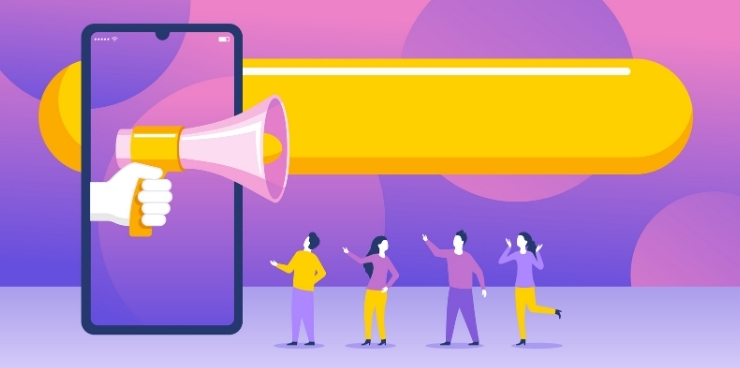If you want to increase your business’s bottom line, you need to expand your customer base. While strategies like lead generation are helpful, it’s often better to get referrals from your existing clientele.
Unfortunately, that is easier said than done. Many businesses don’t know exactly how to ask for referrals, so they may be missing out on some incredible deals. Thankfully, this article will outline the top five tips to help your team get more referrals. Here is what you need to know.
Why are Referrals Valuable for Your Business?
Even if you don’t have any issues finding new qualified customers, a referral program can still be vital to your bottom line. Here are the top reasons why you should be asking for referrals as much as possible:
- Land Bigger Clients – If you want to close more substantial deals, you need to seek high-profile customers. However, these individuals or companies are less likely to work with an outsider. So, getting a referral means that you can build trust before meeting with the prospective client and have a better chance of closing.
- Expand Your Referral Network – As your current customer base refers other leads, and you convert them, those new clients can refer even more individuals, and so on. You can potentially increase your market share relatively quickly.
- High ROI – One of the best benefits of referrals is that they cost practically nothing. So, if you can land a few lucrative customers, you’ll have a much larger ROI than if you used standard lead generation tactics.
Prospective Client vs. Potential Customer
Two fundamental sales elements are prospecting (finding leads) and qualification (focusing on the best leads). When looking at various strategies, you’ll see the terms prospective client and potential customer has thrown around. Although these phrases are similar, they mean two different things.
- A potential customer is a person who may or may not be interested in what your brand has to offer.
- A prospective client, however, is someone who has been qualified and nurtured by the sales team, so there is some expectation that they will buy.
Ideally, you can turn most of your potential customers into prospective clients, but that is harder when finding brand-new leads. This process is much easier with referrals since the lead already knows what to expect from your company.
Five Tips on How to Ask for Referrals
Tip One: Utilize Your Customer Success Manager
While sales and customer service representatives react to customer questions, concerns, and issues, a customer success manager is much more proactive. The CSM’s job is to ensure a smooth transition from lead to a client, and they will maintain a good relationship with customers after they have purchased.
Because long-term communication and loyalty are the goals, customer success managers should be the front line of your referral program. They already have a good relationship with your clients, so they are naturally in a position to know how to ask for referrals.
Best of all, as long as these relationships are positive, your customers will be far more willing to recommend your business to others.
What If You Don’t Have a CSM?
The short answer to this question is to find and train a customer success manager as soon as possible. However, if that isn’t feasible (i.e., you don’t have the budget or resources), you will need to lean on your sales team to achieve the same goal.
Realistically, your sales staff won’t be able to keep up with all past clients, but they can focus on nurturing repeat customers. Better yet, if you develop an automated referral system, reps can ask everyone quickly and efficiently.
That being said, sales training may be necessary to ensure that your team is reaching out to customers the right way. Asking for referrals doesn’t have to be an awkward process, but the wrong language or tactics can make it tough to get positive feedback.
Tip Two: Turn Cold Calls Into Warm Leads
Most sales reps don’t like cold calling because it is often hard to close a deal. However, with a referral, it is much easier to get a positive response.
To ensure that your new leads are warmed up, you want to utilize the person making the referral as much as possible. Ask questions about the person and see if your client can make an introduction. This way, the new lead is more likely to listen to your pitch and give your company a chance.
Overall, you want to avoid a situation where a customer just gives you a name and a phone number. Get as much information as possible beforehand.
Tip Three: Utilize Your Net Promoter Score
One of the best ways to measure the health of your business is to get customer feedback. Happy customers are likely to buy from you again and recommend your brand to others. So, if your client satisfaction is high, your company should be doing well.
The simplest method for determining customer satisfaction is with a net promoter score (NPS). If you aren’t familiar with this term, here is how it works:
- First, you ask your customers this question, “how likely is it that you would recommend our (brand or product) to a friend or colleague?” When asking, be sure to give a ranking option from zero to 10.
- Next, measure everyone’s response. There are three NPS categories based on how high the customer scored. Those at the bottom (zero to six) are detractors, those in the middle (seven or eight) are passives, and those at the top (nine and ten) are considered promoters.
- To determine your net promoter score, simply subtract the detractor total from the number of promoters.
Let’s say that you reached out to 100 people. Sixty of them ranked as promoters, 30 were passives, and 10 were detractors. In this case, your NPS would be 50 (60-10).
The best part about a net promoter score is that it is highly adaptable. You can ask questions about specific products, services, or customer experiences. Additionally, you can ask after each transaction or reach out to past clients regularly to see how their opinion of your brand changes over time.
As you can imagine, your NPS can be highly valuable when learning how to ask for referrals. First of all, the question itself is related to the topic, and secondly, you can determine which customers are more likely to give a referral.
By utilizing your net promoter score, you can focus your attention on the most satisfied clientele. That being said, you don’t want to dismiss your detractors, either. Instead, it is far better to try and turn a detractor into a promoter. While you may not want to ask dissatisfied customers for a referral, you can ask them why they are unhappy with your brand.
From there, you can address any specific issues and request a second chance. Although not everyone will come back, you can potentially convert some detractors. If that happens, they are far more likely to recommend your business since you addressed their complaints and solved the problem.
Tip Four: Focus on Your Best Customers
As we mentioned, the NPS system is vital because it allows you to categorize your customers. While it can be valuable to ask everyone for a referral, it is often better to focus your attention on individuals who are more likely to say yes.
Even without using a net promoter score, your sales team should have a good idea of which clients may respond more positively to referrals. Just as you want to qualify your leads to avoid wasting time, you can do the same for customers.
 Tip Five: Build a Referral Program
Tip Five: Build a Referral Program
One of the primary issues with learning how to ask for referrals is that there is no standard method for doing it. All too often, businesses take a meandering approach, meaning that they will ask randomly or arbitrarily. In that case, it is hard to get any meaningful responses.
A better option is to build a referral system. This program can either be automatic or based on client interactions. Here are some ways to get started:
Come Up With a Script
Although an email or sign can be useful, the best way to ask for referrals is in person or over the phone. To help your sales or customer service team avoid fumbling, write a script and have each rep memorize it.
Ideally, the script will focus on positive interactions and building a relationship with the customer. Rather than a straightforward “do you know anyone else who may be interested in our products?” your team can reinforce your brand quality. Here is an example of a referral script:
“Hello [customer name],
First of all, I want to thank you so much for shopping with us! We appreciate all of our customers, and we are happy that you had a fantastic experience. Our company is committed to providing that same level of care and attention to detail to everyone we encounter.
Since you had such a positive experience with our team, I wanted to see if you knew anyone else who could benefit from our products. Perhaps a friend, co-worker, or family member? Referrals are the core of our business, and we pride ourselves on building a strong network of satisfied customers.
You don’t have to think of anyone right now, but please call me back at [phone number] if you come up with a referral. You can also reach out if you have any questions or want to buy from us again!
Thank you so much for your time. I hope you have a wonderful day!”
Create Referral Materials
Realistically, the bulk of your referrals will come from personal interactions. However, it is also a good idea to create various marketing and sales materials that mention your referral program. These items can include:
- Emails – Leverage your subscriber list to get more business.
- Email Signature – Subtly remind everyone you contact that your company loves referrals
- Signage – Place marketing signs in high-traffic areas and in places where your sales team meets with clients.
Come Up With an Incentive Plan
While you cannot solicit positive reviews by offering freebies, you can incentivize customer referrals. For example, clients can receive a free add-on or discount with their next purchase. Or, perhaps the referral customer could get rewarded.
Another point to consider is that you can incentivize your sales and customer service reps to ask for referrals as well. For example, you can offer $5 gift cards for each referral that buys something. With a rewards program, your team will be far more motivated to follow up with customers.
Use Social Media
Sites like LinkedIn and Twitter are useful for finding leads, so why not referrals as well? You can use these platforms to message past customers directly or promote your program to the masses. Ideally, your audience will be mostly clients, but it doesn’t hurt to tell new leads that they can benefit from referring others to your business.
Analyze Your Results
Once you build a customer referral program, the job isn’t finished. What happens if no one is recommending new leads? What if your customer relationships are struggling? You need to have a system in place to analyze which elements are working so that you can refine the process to be more effective. Otherwise, you could be wasting time and resources.
Contact Selling Revolution Today
Building a customer referral program can be challenging if you have never done it before. Not only that, but it can be hard to find new referral opportunities, particularly if you are a new business.
Fortunately, Selling Revolution can make it easy to get customer referrals with real-world strategies and examples. Let our team help you expand your network and build your market share. Contact us today to find out more.



 Tip Five: Build a Referral Program
Tip Five: Build a Referral Program